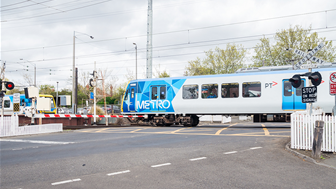Capturing and understanding customer movements and behaviours in places such as shopping centres and stadiums, as well as virtual spaces such as online stores and websites, can provide a tremendous amount of insight into optimising the experiences of customers, and capitalising on patterns and trends that emerge from the data.
Zebra Technologies believes that its NSight platform, which consists of a location management and data analytics engine, can provide its customers with the tools necessary to monitor, analyse and predict the movements of their customers as they interact in their physical or virtual locations.
Using close integration with Zebra’s WiNG wireless LANs, NSight can provide a real-time view of the way customers interact with a network, from the time an access point detects a customer’s presence as they walk through the door, through to the various locations that the customer visits during their stay, to their exit from the premises.
For example, the system is capable of detecting where customers tend to congregate, visually map it onto preloaded floor plans, and ensure that wireless connectivity is optimised to ensure continuous connection in those areas.
If a frequently visited area does not have sufficient wireless coverage, remedial action could then be taken by the vendor to install more access points, or boost the signal from existing ones.
However, NSight is more than a network analysis and optimisation tool.
Zebra’s senior technical director for the APAC region, Wayne Harper, told IoT Hub that NSight can provide greater customer insight for its users.
“[NSight can see] how long someone has been in the premises of a shopping centre or store, and track them around that environment,” he said.
“If you know the path that someone has taken around a certain store or facility, you can predictively analyse how other people are going to do that, and you can then start to use that data to lay out the aisles of the store, or the exits of a stadium, and route them around.
“You can also use it to work out how long people dwell at a certain point, so if you want to sell outdoor advertising to someone, you could, predict in the next 45 seconds that they’re going to walk down a particular corridor, and then put digital materials directly on their path.”
Harper believes that IoT could augment such systems by allowing them to facilitate even more personalised data analysis, assuming that those interacting with the system had opted in.
For example, a customer could be seen to move to the footwear section of a store, look at the price of a shoe, then jump on their smartphone to compare prices with other stores online.
NSight could provide the shoe store visibility of the time spent in the footwear section, the shoe the customer was interested in, and also provide insight into the competition that the customer is comparing against.
Data security and privacy is a concern that Zebra takes very seriously, and Harper was quick to point out that NSight can be as equally effective with a high-level view of the data, as with individual information.
“NSight can be very generic – it can only ‘see’ a device – or you can go all the way down to individual data via opt-in,” he said.







